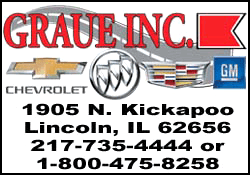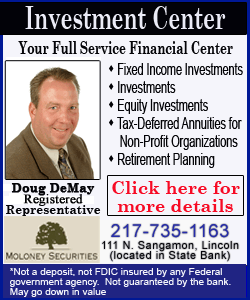|
 Fiat Chrysler Automobiles has doubled its local workforce to 7,000
amid record industry sales, upscale apartments are being built or
tucked into vacant factories, and new small businesses are opening
along a quaint Main Street. Fiat Chrysler Automobiles has doubled its local workforce to 7,000
amid record industry sales, upscale apartments are being built or
tucked into vacant factories, and new small businesses are opening
along a quaint Main Street.
As the Federal Reserve meets to begin a likely turn towards higher
interest rates, the buzz in places such as Kokomo is one reason
policymakers think the U.S. recovery has room to run. This city of
57,000 was hit hard by the recession, but the dynamic developing
here is one the Fed sees nationally: more jobs gradually translating
into higher wages, and wage growth translating into spending.
"Seven years ago this was considered one of the 'dyingest' cities in
America," with mainstay auto companies teetering on the brink and
people leaving for Indianapolis to the south and Chicago to the
north, said Sandra Young, owner of the Main Street Cafe.

She opened three years ago, and now sees a booming corporate
catering trade as a good omen that companies and individuals are
confident.
"Budgets aren't so tight," she said.
Compared to other recoveries this one is arguably past middle age,
and the Fed has been unusually patient in nurturing it with interest
rates held near zero. (Graphic: http://tmsnrt.rs/1O7pck6)
Since World War Two the average expansion has lasted just under five
years. This recovery has been going on for six and a half, and
throughout that time the economy has struggled to move beyond modest
2 to 2.5 percent annual growth. As a result, the Fed has stayed put
for a full seven years, about twice as long as the central bank
usually waits to begin tightening.
Motor vehicles, with sales through November up nearly 7 percent from
a year earlier, are not the only part of the retail business doing
well. Spending at restaurants and bars grew more than 8 percent
compared to the year before. Housing-related sectors are also doing
fine, with furniture and home furnishing stores' sales up 5.6
percent, and building materials' sales up 3.9 percent, outpacing
overall retail growth of 2 percent.
Autos and auto parts, which account for about a fifth of U.S. retail
sales, could prove important to the Fed's success in both
"normalizing" rates and keeping the recovery on track. (Graphic:http://reut.rs/1lMb6Iz)
Policymakers, analysts and people like Kokomo's United Autoworkers
president say conditions may be aligned to keep the expansion
underway.
"We've gone from 3,200 members to 7,000 and they are still looking
for new stuff to put in the factories," said Carl Greenwood,
president of UAW Local 685.
Chrysler makes castings and transmissions, including new models for
electric cars, in four plants around Kokomo.

RETURN OF THE CONSUMER
Between low unemployment, a whisper of evidence that wages are
rising, and the savings from low gas prices, greater consumer
purchasing power is finally becoming visible after a delay that had
mystified the Fed. Demand for autos has been especially eye
catching, with record sales of around 18 million this year.
[to top of second column] |

The gradual rate hikes the Fed may approve this week and over the
next year are not expected to significantly crimp demand, or cool a
housing market that has also propped up recent growth. National new
homes sales have risen more than 15 percent in the first 10 months
of this year from the year before, and a government index of home
prices has been rising at an annual five percent rate for nearly two
years.
A recent J.D. Power survey estimated that if rates rise 0.5
percentage points next year it would curb auto sales by just 150,000
vehicles, leaving them well above the average of 15 million a year
since 1990.
Not only are interest rates likely to remain low by historic
standards for perhaps another two years, but members of one key
demographic group - the millenials - are starting to spend, said
Standard & Poor's chief economist Beth Ann Bovino.
The 16 to 35-year-olds accounted for a fourth of new auto sales last
year and "are the general cohort for which auto sales are growing at
the fastest pace." Home buying among that group is also rising.
The current expansion "is old, but economic cycles do not die of old
age... there is latent demand out there," Bovino said.
Over the last year business investment has contributed little to
economic growth, hammered by the cutbacks in the energy sector.
Government spending has stagnated, and foreign trade acted has acted
as a drag given the weak state of the global economy and strong
dollar.

Domestic consumption has picked up the slack, and Fed chair Janet
Yellen is confident it will continue thanks to further job gains and
accelerating wages.
That is the hope in Indiana, where the auto upswing has pushed the
unemployment rate down to 4.4 percent, below the national average of
5 percent.
"If they are doing well everyone else is doing well," said Amber
Jordan, who left the auto industry with her husband after more than
a decade to open a specialty toy store selling vintage action
figures.
They recently converted an old downtown hotel, the lobby now lined
with Star Wars and other figures. It's a bet that people will, for a
while, keep coming in the door.
"The jobs go up and down," she said, but for now "to me, things feel
stable."
(Reporting by Howard Schneider; Editing by David Chance and Tomasz
Janowski)
[© 2015 Thomson Reuters. All rights
reserved.] Copyright 2015 Reuters. All rights reserved. This material may not be published,
broadcast, rewritten or redistributed. |